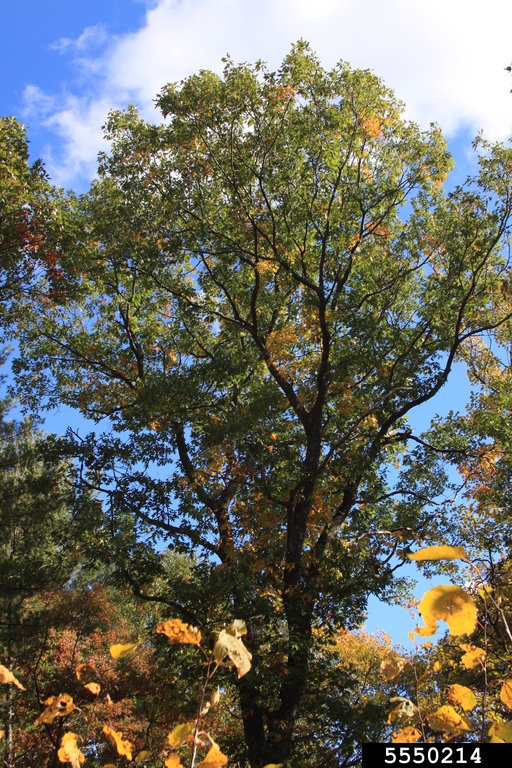Common Name: black oak
Scientific Name:
Family: Fagaceae
Genus: Quercus
Species: velutina
Hardiness Zone: 3 to 9
Height: 50 to 60 ft
Width: 50 to 60 ft
Common Characteristics:
Black oak is a large shade tree that is part of the red oak group. It has a similar appearance to red oak, but the buds on black oak are fuzzy and larger than those on red oak. The bark is smooth and gray on younger trees, becoming a blackish color, thick and rough, and deeply furrowed into ridges. The inner bark of the tree is yellow or orange and is very bitter. Leaves are elliptical in shape with 7 to 9 lobes that can be either shallow or deep. The lobes have 1 to 3 top bristles each. They are shiny green above and yellow-green underneath with brown hairs. The leaves turn dull red or brown in the fall. The acorns on black oak are long and elliptical in shape with half of the nut covered by a saucer-shaped cap. The cap has a fringed border with loose rusty-brown hairy scales that mature in the second year. Mature trees produce large crops of acorns every 2 to 3 years.
Where it Grows:
Black oak can be found growing on dry upland sandy and rocky ridges and slopes. It prefers dry acidic soils and full sun to part shade. It does not do well in sites with poor drainage. Large crop production of acorns can make this tree messy and challenging to keep sidewalks clean.
How it's Used:
Black oak is used as a parkway or street tree. It is also used as a shade tree in parks. The inner yellow bark was formally used as a source of tannin and yellow dye.
Ecosystem Services:
This tree is an important source of food and shelter to game birds, game mammals, migrant birds, and small mammals such as squirrels.
Where it is Native To:
The native range of black oak is from Maine to southwest Florida. It goes from the east coast states to Texas and Oklahoma. In the midwest, it only reaches the southeast corner of Minnesota.
Problems:
Black oak is highly susceptible to oak wilt. It is recommended to prune black oak during the dormant season in the winter months to prevent attracting beetles that are potentially carrying oak wilt.
References:
Little, E. L. (n.d.). National Audubon Society Field Guide to North American Trees; Eastern Edition. (Original work published 1980)
